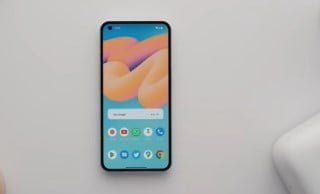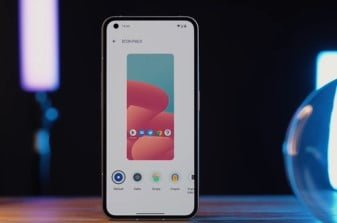Last year, among all the phones, the Nothing Phone 1 excited me the most. About a month ago, I started using it again as my main phone to see how it has changed. During using it, I discovered some new things about it. I believe it’s worth sharing my findings in a article, so here’s my updated review of the Nothing Phone 1, six months later.
Specifications
| Display | 6.55-inch OLED 2,400 x 1,080 resolution 402ppi 500 nits brightness / 1,200 nits peak 120Hz adaptive refresh rate (60Hz lowest) 240Hz touch sampling HDR10+ support Gorilla Glass 5 |
| Processor | Qualcomm Snapdragon 778G Plus |
| GPU | Adreno 642L |
| RAM | 8 or 12GB |
| Storage | 128 or 256GB UFS 3.1 No microSD card support |
| Power | 4,500mAh battery 33W PD3.0 wired charging 15W Qi wireless charging 5W reverse wireless charging No charger in box |
| Cameras | REAR: – 50MP Sony IMX766 wide-angle (ƒ/1.88, 1/1.56-inch sensor, 1μm pixel, 24mm focal, OIS, EIS) – 50MP Samsung JN1 ultrawide (ƒ/2.2, 1/2.76-inch sensor, 114-degree FoV, EIS)FRONT: – 16MP Sony IMX471 wide-angle (ƒ/2.45, 1/3.1-inch sensor) |
| Video | 4K at 30fps 1080p at 30 or 60fps Live HDR at 30fps Slo-mo at 120fps (main lens only) Night Mode at 720p/1080p (30fps) OIS on main rear lens only EIS on both rear lenses |
| Audio | Dual-stereo speakers No 3.5mm headphone jack |
| Security | In-display fingerprint reader |
| Durability | IP53-rated Gorilla Glass 5 front/back |
| Ports | Dual-SIM USB-C |
| Network | Gigabit 5G dual Mode (NSA & SA) with 4×4 MIMO 5G 4G LTE — Wi-Fi 4/5/6 and 802.11 a/b/g/ Bluetooth 5.2 NFC enabled with Google Pay support — GPS with A-GPS. Up to dual-band: GLONASS (1), BDS (2), GALILEO (1), QZSS (1) |
| Software | Android 12 Nothing OS Three years of upgrades Four years of patches |
| Dimensions & weight | 159.2 x 75.8 x 8.3mm 193.5g |
| Colors | Black, white |
Design

In terms of design, Nothing made some great choices with this phone, like the flat display and matte side rails. They also went for evenly sized bezels around the entire front.
However, there are a few changes I suggest for their next release. Firstly, they should move the selfie camera hole punch to the middle. Currently, it’s disorienting during video calls or when taking selfies with family. It messes with eye lines and requires constant hand readjustments to avoid covering the camera.
Secondly, if they could maintain the transparent design but add a matte finish to the back, that would be fantastic.
Lastly, I’d like to see slightly slimmer bezels. While they’re consistent in size, they’re thicker compared to the competition.
Display

The smartest move Nothing made with this phone was the display. It might not be the brightest, but it’s incredibly smooth with its 120Hz refresh rate and seamless software. This makes the phone feel much more premium than its actual price.
Read Also: Oppo Find N2 Flip Review
Android 13

First things first, before I started using this phone again, I wanted to install the Android 13 beta update. It turned out to be quite a process. I had to factory reset the phone, downgrade it to Nothing OS 1.1.3, then upgrade it back up to 1.1.7 before I could finally sideload the update. But eventually, I managed to do it. While writing this, the official Android 13 update was released, which I promptly installed as well. I must say, the Android 13 experience on this phone has been really smooth. In my opinion, it’s the best software version Nothing has released so far. Even the beta versions were impressive. It’s clear to me that Android 13 and the Nothing Phone 1 are a perfect match.
Now, talking about software, I wanted to address some of the issues I mentioned in my initial review of this phone. I wanted to see if, or how, they’ve been addressed in the updates since then.
Battery Life

The most significant improvement since my last review of phone 1 has been the battery life. Initially, it struggled to last a full day without needing a recharge. However, thanks to several optimizations, especially in the latest Android 13 update, the battery life has significantly improved. Now, it easily lasts the whole day without dying before bedtime. Previously, I rated the battery as a C/C+, but now it’s more like a B/B+ experience.
Having wireless charging adds to the premium feel of this phone. It’s one of the customizations Nothing made to the 778g plus chipset.
For instance, OnePlus recently released the OnePlus 11, which is a great value phone overall. However, it lacks wireless charging, which makes it feel less premium compared to phones like this one.
Software Experience

Another issue that’s been addressed is the Wi-Fi and mobile data toggles in the Quick Settings panel. They’re now real actionable toggles, which I’ve discussed in my first review. I was pleased to see this added in a recent update.

Unfortunately, there haven’t been any new updates for customization flexibility in the launcher. However, I’ve been using an app called App Bar to achieve this custom home screen setup you see here. I’ve also used Icon Pack Studio to create a miniaturized version of the Crown Icon Pack for my app drawer icons. What I’ve learned is that as long as manufacturers allow us to remove everything from the home screen and use third-party icon packs, that’s all we need to create any home screen setups we want.

If the software team at Nothing is watching, adding the option to hide apps from the app drawer in a future update would be fantastic. Apart from that, the software experience on Nothing phone 1 is honestly one of the best you can get on any Android device right now. It’s not as customizable as Samsung’s ONE UI or feature-packed as iOS, but it’s a silky smooth and beautiful experience.
Unfortunately, there’s still no one-handed mode, which I thought would come with the Android 13 update. Hopefully, it’ll be added soon. If you love the Pixel software experience, then Nothing phone 1 is pretty much the closest thing you’ll get without actually owning a Pixel phone.
Performance

As I mentioned in my first review, Nothing phone 1 performance is excellent. While it would be fantastic to see Nothing release a flagship-level phone with the Snapdragon 8 Gen 2, which is rumored to happen this year and I’m thrilled about it.
However, the 778g plus chipset inside this phone is truly impressive. I wouldn’t mind if Nothing continues to use an upgraded version of this chipset in their mid-range follow-up. The price and performance value it offers are exceptional.
Changes Nothing to make
With all that said, there are only three things I really want Nothing to improve in the next version of phone 1, and especially in the rumored flagship coming later this year. These are: the haptics, the fingerprint sensor, and the cameras.
Firstly, the haptics are not terrible in this phone, but they’re not as premium as iPhones, Pixels, or Samsung flagship devices. I’d love to see Nothing make the haptics in their next phone top-notch.
Then, the fingerprint sensor. Coming from the Pixel 7 Pro, which had a much better sensor compared to the Pixel 6 Pro, I feel the inadequacy of the sensor in the Nothing Phone 1. It has improved slightly with software updates, but it’s still too low on the front of the phone, making it uncomfortable to reach. It’s also one of the most unreliable in-display fingerprint sensors I’ve used since the OnePlus 6 series.
Nothing, if you’re watching, consider copying Google’s face unlock implementation for your own face unlock. The face unlock scanning icon looks too similar to a fingerprint sensor icon. Also, the fingerprint sensor disappears after my face is registered, and the face unlock stops scanning if I tap to open a notification or swipe to unlock my phone, which is not good. If you fix these issues and improve the in-display sensor, that would be amazing for me.
Camera

The last thing that really needs addressing is the camera system. I’ve missed having a telephoto lens on Nothing phone 1. I understand it might be too much to ask for on a mid-range phone, but I hope at least a 3x lens is added to this rumored flagship-level phone coming this year.
The image capture and processing situation needs tweaking too. Since I started using this phone again, I’ve mostly used the stock Nothing camera app instead of a GCam port like I did last time. The phone 1 can take decent shots in the right conditions, but it struggles with pictures of people and in lower light.
Images also tend to look slightly over-sharpened, which I don’t like. Additionally, there’s significant shutter lag when capturing shots using the camera app. While you can get fantastic images from phone’s 1 cameras, I don’t feel comfortable relying on it as my only camera, unlike with a Pixel or iPhone.
Final Thought
So, that’s it. As much as I loved Nothing Phone 1 the first time around, I think I’ve loved it even more this time, thanks to Nothing’s improvements in the software. I’m really excited for the rumored flagship-level phone that Nothing might release this year, and I’ll definitely get my hands on it. But even though it’s been over six months since this phone was released, if you’re still thinking about getting one, I think you should go for it. It’s a fun phone to use, with a great design and software experience. I applaud Nothing for their efforts with phone 1.

